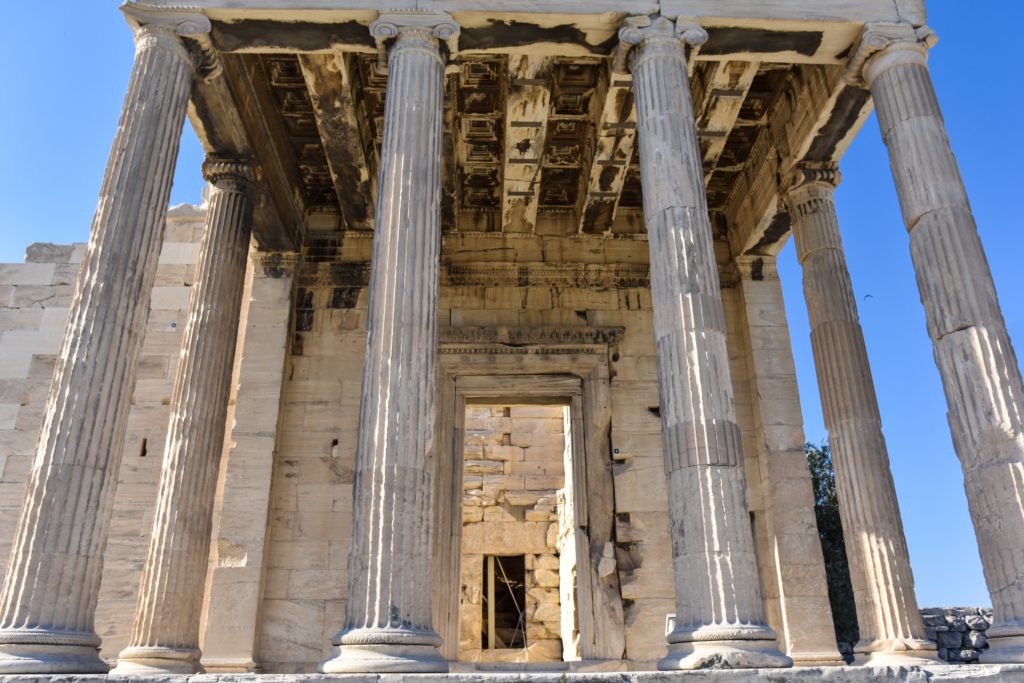
What visit to Greece would be complete without a visit to the Acropolis? If you’re a lover of culture, Greek mythology and history like myself, visiting the Acropolis is a “must do” when you’re in Athens. Located high on a hill above the city, the Acropolis and the monuments within, are a symbol of classical Greek civilization and one of the most striking ancient Greek monumental complexes still in existence today.
Sitting at a height of 490 feet above the city, the Acropolis has been inhabited since prehistoric times and over the centuries, it was used as many things including as a home to kings, a citadel, a mythical home of the gods, a religious center and a tourist attraction. It has undergone and withstood bombardment, earthquakes and vandalism and theft and yet still stands as a reminder of the rich history of Greece.
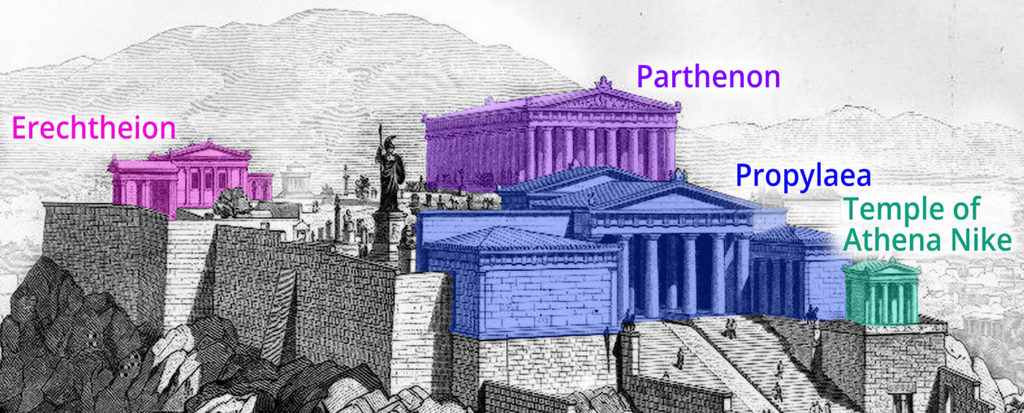
Reconstruction of the Acropolis
Visiting The Acropolis
The Acropolis is one of the most iconic sites in Athens and one of the most visit archaeological sites in the world. As a result, it attracts a LOT of tourists. The best time to go is in the morning, when it opens at 8:00am, in order to beat the crowds, and also the heat! There’s a bit of walking involved and it’s best to visit in the morning when it’s cooler.
You should also purchase a “skip the line” ticket in advance, in order to walk right in as soon as the Acropolis opens. I would recommend using Clio Muse Tours to do this. You can book with them online and I would recommend booking their Acropolis Hill & Museum Skip The Line Tour for entry to the Acropolis at whatever time you select, as well as, entry to the adjacent Acropolis Museum. Not only will you get to skip the line, but the Clio Muse app will provide a self-guided audio tour of the Acropolis and Museum using your smartphone. It makes the entire experience as smooth and as hassle free as possible and allows you to do it on your own time and at your own pace.
The Parthenon
On the rock of the Acropolis, there are several monuments from ancient Greece. Among those buildings, the Parthenon is probably one of the most famous, and magnificent. The Parthenon an enormous Dornic-style temple dedicated to the goddess Athena, the protector and name sake of the city of Athens. It featured ornate sculptures and housed a spectacular statue of the goddess Athena. It was built during Athens cultural peak from 460 B.C. to 430 B.C.
Fun fact is that the external pillars of the Parthenon are not exactly straight. They are actually slightly curved, so as to give the optical illusion that they are straight from every angle you look it. It’s a truly unique building and its design has inspired the architectural style of the western world and can be seen in countless buildings from libraries, to palaces to universities and public buildings.
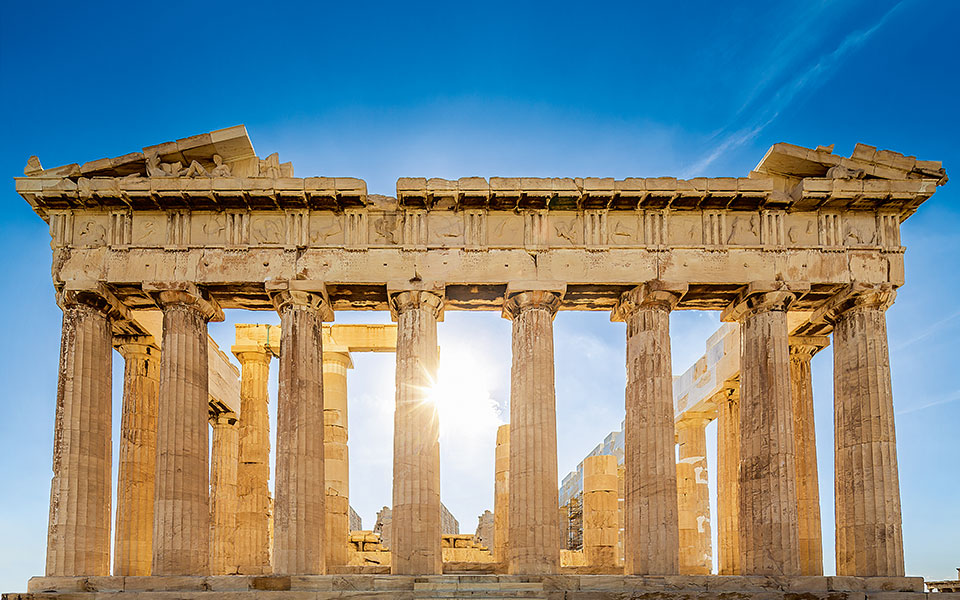
The Parthenon
The Propylaea
The word Propylaea in Greece is any monumental gateway in Greek architecture. The Propylaea in the Acropolis was built in 437 B.C. and was designed as a grand entryway to the plateau of the Acropolis and the monumental Parthenon. The Propylaea was designed by the Athenian architect Mnesicles and constructed with white Pentellic marble. One of Mnesicles challenges was finding a solution to the challenge that arose due to the differences in levels. It truly makes you appreciate such a massive structure. The Propylaes consisted of a grand hall that was flanked on both sides by two Doric porticoes. Six of these columns remain and can still be seen today.

The Propylaea
The Temple of Nike
In the south-west corner of the Acropolis stands the Temple of Athena Nike, a building with four Ionic columns across the front and the same number behind. Completed in 420 B.C., it’s the smallest temple at the Acropolis and the first building that greets visitors who enter via the Propylaea. The entrance of the temple is lined with four Ionic columns across the front, and the same amount in the back. Inside the temple, was the wooden statue of the cult of Nike, depicting the goddess with a pomegranate in her right hand and a helmet in her left one.
The Erechtheion
Another impressive structure on the Acropolis, construction of the Erechtheion began in 420 B.C., was paused due to the Peloponnesian war, and completed in 406 B.C., three years before Athens fell to Sparta. This temple was dedicated to both Athena and Poseidon and housed the ancient wooden cult statue of Athena. The most famous statues of Erechtheion are the Caryatides, the statues are today in display at the new Museum of the Acropolis. This sacred temple is best known for its porch, supported by six Caryatid maiden statues.
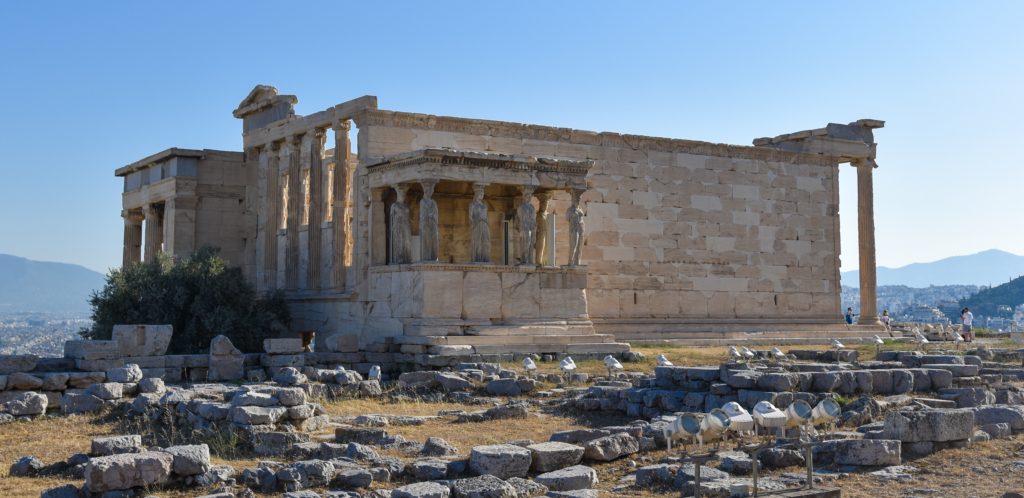
The Erechtheion
The Flag Pole on The Belvedere
In the northeast corner of the Acropolis, flies a Greek flag and offers a gorgeous vantage point of Athens. The spot, however, is more than a great place for a photo opp. When the Germans occupied Athens in WWII, the soldier who guarded the Greek flag which flew from the Acropolis, was order by the Nazi’s to remove it. He calmly took it down, wrapped himself in it, and jumped to his death.
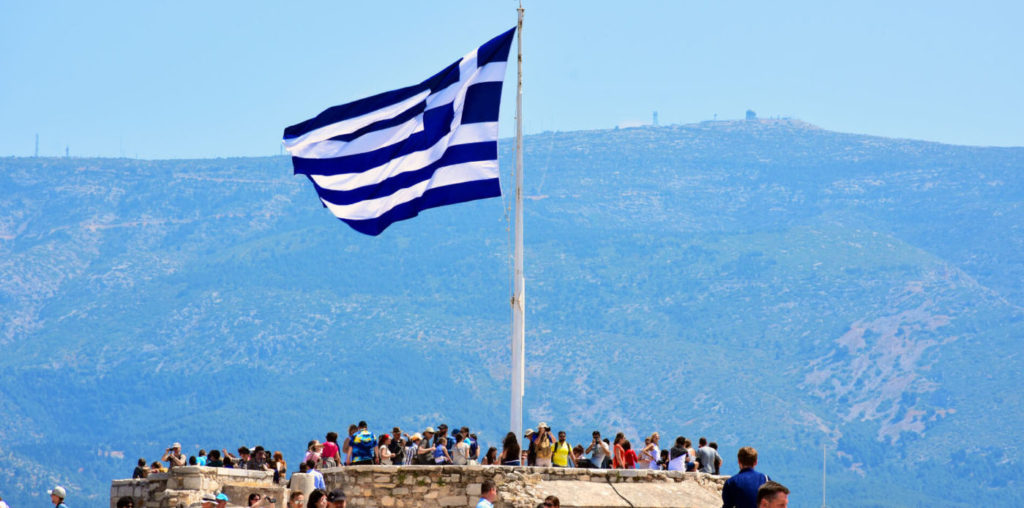
The Flag Pole on The Belvedere
Theater and Odeons
Although not technically part of the Acropolis, a number of structures were built on the southern slope of the Acropolis. Among them was a theater of Dionysus, shaped like an orchestra, which dates back to as early as the sixth century B.C. Later Pericles, the statesman, constructed a roofed Odeon beside it (now largely destroyed) where, according to the ancient writer Plutarch, Pericles held musical contests.

You can visit Clio Muse Tours online at https://cliomusetours.com and on Instagram at @cliomusetours

Geron is an avid traveler, entreprenuer and mens style aficionado. He love’s mac and cheese, getting discounts, his momma, and a good whiskey, not particularly in that order. It’s alleged he lives in Miami, but no one really knows anymore.
Follow him on instagram at @geronp










